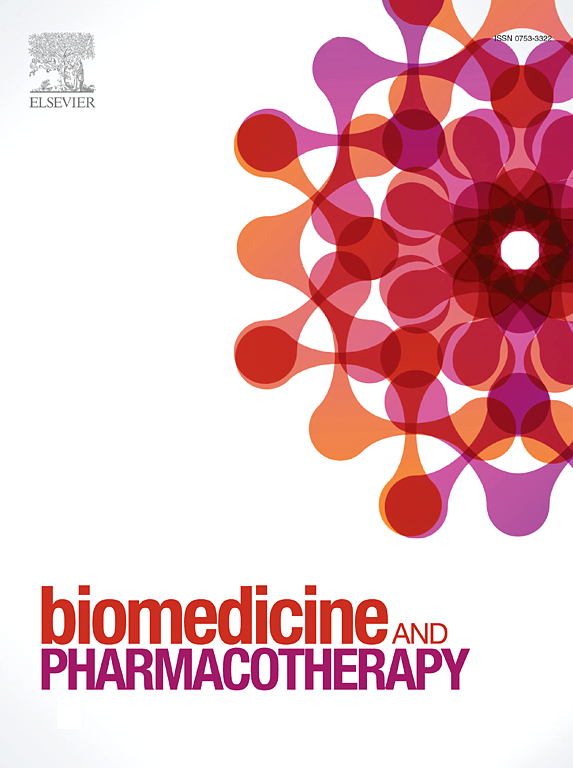Cytokines, chemokines, and immune cells involved in oral immunity towards the dental cariogenic bacterium Streptococcus mutans: Therapeutic interventions and vaccination
IF 7.5
2区 医学
Q1 MEDICINE, RESEARCH & EXPERIMENTAL
引用次数: 0
Abstract
Untreated dental caries, or tooth decay, is the most frequent health-related affliction, mainly due to insufficient service in low- and middle-income countries. The inflammatory niche in the presence of Streptococcus mutans and its biofilm in the oral cavity can lead to immune-mediated tissue injury, enamel demineralization, cavitation, pulp infection, dental loss, and extraoral disorders such as endocarditis. Recruiting immune responses to fight pathogens is a novel therapeutic strategy that prevents antimicrobial resistance and regulates the immune microenvironment. Within this manuscript, the host’s determinative innate and adaptive immune functions in the progression or regression of dental caries are introduced. Primarily, the correlation of S. mutans and its virulence factors, such as antigenI/II, quorum-sensing peptides, collagen-binding proteins, glucosyltransferases, and lipoteichoic acid on oral immunopathology has been classified. The role of phagocytosis, NETosis, and pyroptosis on pathogen clearance and the effect of virulence factors on the immune markers in the secretome of dendritic cells, dental pulp stem cells, and odontoblasts are described. The placement of natural products, antimicrobial peptides, probiotics, stem cells, nanoparticles, and irradiation involved in the immunotherapy of dental caries is investigated. The nasopharynx-associated lymphoid tissue in mucosal administration of the anti-caries vaccine is critical. Therefore, the effects of immunodominant antigens, delivery vectors, promoters, endogenous inhibitory microRNAs, the prime-boost vaccination strategy, and co-immunization of genetic vaccines with cytokines and chemokines as adjuvants on immunocyte activation, salivary IgA, and specific serum IgG in caries prevention are determined. Conclusively, successful therapeutic interventions that recruit oral immunity to eradicate S. mutans affected ERK/MAPK, NF-κB, and inflammasome signaling pathways in favor of Th1 response suppression. The most effective caries preventive vaccines produced a combination of Th1, Th2, and Th17 responses. Finally, multivalent vaccines inhibiting the activation of suppressor of cytokine signaling (SOCS) genes are proposed for the successful development of anti-caries vaccine.
细胞因子、趋化因子和免疫细胞参与口腔对致龋细菌变形链球菌的免疫:治疗干预和疫苗接种
未经治疗的龋齿或蛀牙是最常见的与健康有关的痛苦,主要原因是低收入和中等收入国家的服务不足。变形链球菌及其生物膜在口腔中的炎症生态位可导致免疫介导的组织损伤、牙釉质脱矿、空化、牙髓感染、牙齿脱落和心内膜炎等口腔外疾病。招募免疫反应来对抗病原体是一种新的治疗策略,可以防止抗菌素耐药性并调节免疫微环境。在这篇手稿中,宿主的决定性先天和适应性免疫功能在龋齿的进展或消退被介绍。首先,对变形链球菌及其毒力因子(如抗原i /II、群体感应肽、胶原结合蛋白、葡萄糖基转移酶和脂磷胆酸)与口腔免疫病理的相关性进行了分类。本文描述了吞噬、NETosis和焦亡对病原体清除的作用,以及毒力因子对树突状细胞、牙髓干细胞和成牙细胞分泌组免疫标记的影响。研究了天然产物、抗菌肽、益生菌、干细胞、纳米颗粒和辐射在龋病免疫治疗中的作用。鼻咽相关淋巴组织在抗龋疫苗的粘膜管理是至关重要的。因此,本研究确定了免疫优势抗原、递送载体、启动子、内源性抑制性microRNAs、初补型疫苗接种策略以及以细胞因子和趋化因子为佐剂的基因疫苗联合免疫对免疫细胞活化、唾液IgA和特异性血清IgG在预防龋齿中的作用。综上所述,利用口服免疫来根除变形链球菌的成功治疗干预会影响ERK/MAPK、NF-κB和炎性小体信号通路,有利于抑制Th1反应。最有效的龋齿预防疫苗产生Th1、Th2和Th17反应的组合。最后,提出了抑制细胞因子信号抑制因子(SOCS)基因激活的多价疫苗,以成功开发抗龋疫苗。
本文章由计算机程序翻译,如有差异,请以英文原文为准。
求助全文
约1分钟内获得全文
求助全文
来源期刊
CiteScore
11.90
自引率
2.70%
发文量
1621
审稿时长
48 days
期刊介绍:
Biomedicine & Pharmacotherapy stands as a multidisciplinary journal, presenting a spectrum of original research reports, reviews, and communications in the realms of clinical and basic medicine, as well as pharmacology. The journal spans various fields, including Cancer, Nutriceutics, Neurodegenerative, Cardiac, and Infectious Diseases.

 求助内容:
求助内容: 应助结果提醒方式:
应助结果提醒方式:


